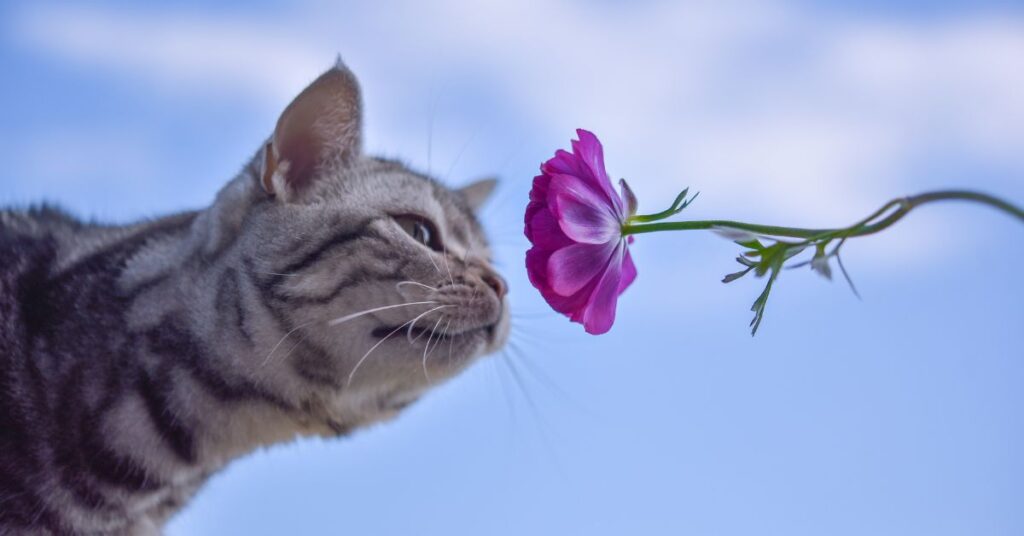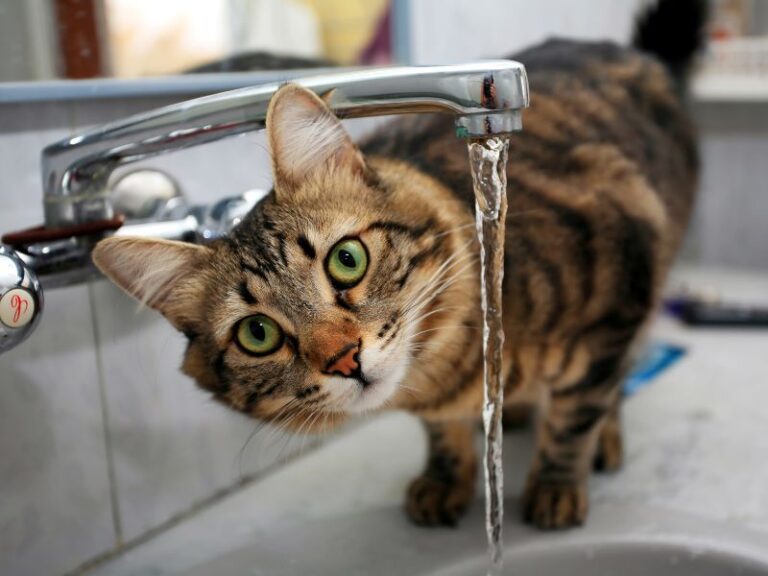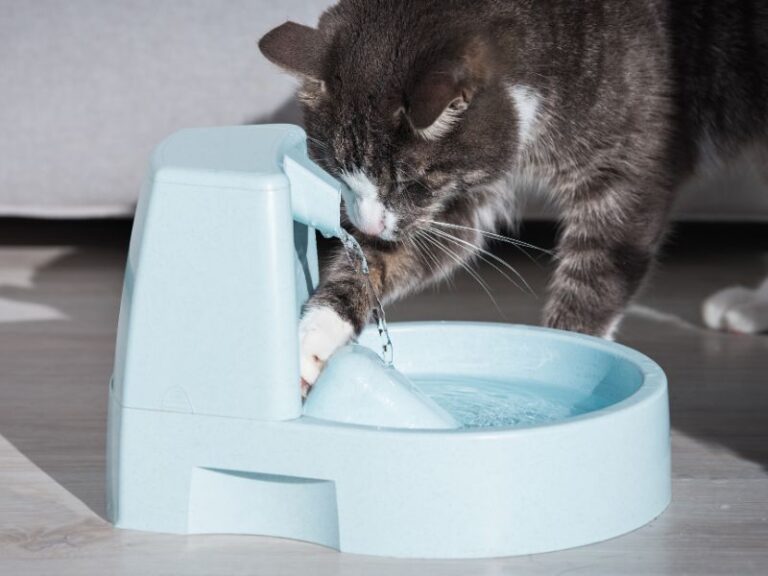Table of Contents
ToggleEmbracing the world of aromatherapy isn’t limited to humans alone – our feline friends can also benefit from the soothing scents and therapeutic properties of essential oils. Essential oils for cats offer a unique way to create a serene environment infused with delicate aromas, creating an oasis of calm for both you and your cat. In this guide, we will embark on a journey through the realm of Essential Oils for Cats and delve into safe aromatherapy practices that can enhance the well-being of your whiskered companion.
As responsible cat owners, it’s our duty to ensure the safety and comfort of our feline family members. This guide is designed to shed light on the wonderful possibilities that aromatherapy can offer to our cats, while also emphasizing the importance of adhering to guidelines that prioritize their health and happiness.
Whether you’re a seasoned aromatherapy enthusiast or a curious newcomer, this article aims to equip you with the knowledge needed to create a harmonious atmosphere for your cat, using the power of scent to enrich their lives. So, let’s embark on this aromatic journey together, discovering the delicate balance between the enchanting world of essential oils and the safety of our beloved pets.
Understanding Aromatherapy for Cats
Imagine walking into a room filled with the gentle aroma of lavender, feeling your worries melt away as the fragrance envelops you. Now, picture your cat experiencing a similar sensation – a moment of relaxation and tranquility brought about by the power of aromatherapy. Aromatherapy, the art of using essential oils for therapeutic purposes, isn’t just limited to humans; our feline companions can also benefit from its wonders.
Exploring Aromatherapy’s Feline Wonders
A cat’s sense of smell is nothing short of extraordinary. With scent receptors that far outnumber our own, they navigate the world through their acute olfactory senses. Aromatherapy for cats harnesses this unique trait, offering an array of potential benefits.
Calming and Relaxation
Certain essential oils for cats, when properly diluted and used with caution, can create a calming environment for cats. For instance, lavender oil, known for its soothing properties, might help alleviate stress and anxiety in both humans and cats alike.
Elevating Mood and Comfort
Just as we associate pleasant scents with positive experiences, cats can also be influenced by uplifting aromas. Citrus scents, like sweet orange oil, may infuse a sense of comfort and joy into your cat’s surroundings.
Repelling Unwanted Pests
Aromatherapy can also serve a practical purpose in deterring pests that might bother your furry friend. Essential oils for cats like cedarwood and lemongrass, when used cautiously, may help keep certain insects at bay.
The Art of Feline Aromatherapy
While the potential benefits of aromatherapy are captivating, it’s crucial to approach this practice with caution and respect for your cat’s sensitivities. Cats have specific physiological differences that make them susceptible to certain essential oil compounds. Their unique metabolism and liver function can influence how they react to various scents, underscoring the importance of responsible usage.
Choosing the Right Essential Oils for Cats
As you embark on your journey into the world of feline aromatherapy, the selection of essential oils becomes a pivotal step. Just as each cat has its own personality, preferences, and sensitivities, not all essential oils are suitable for our furry companions. In this section, we’ll explore the process of choosing cat-friendly essential oils that align with your cat’s well-being.
Friendly Essential Oils For Cats
When it comes to selecting essential oils for your cat, safety should always take precedence. Opt for oils that are known to have minimal adverse effects on cats and are generally considered safe when used appropriately. Some essential oils that have garnered approval for feline use include:
Lavender Oil
Known for its calming and relaxing properties, diluted lavender oil might help create a serene atmosphere for your cat. It’s important, however, to introduce any new scent gradually to observe your cat’s response.
Chamomile Oil
With its soothing scent, chamomile oil is another contender for feline aromatherapy. Similar to lavender, it may promote relaxation and tranquility.
Frankincense Oil
Often associated with spiritual and meditative practices, frankincense oil is considered safe for cats when used sparingly and properly diluted.
Valerian Oil
If your cat enjoys playtime, valerian oil might be of interest. Diluted valerian oil is known to elicit playful behavior in some cats.
Consider Individual Preferences
Just as we have preferences for certain scents, our cats too can display preferences for particular aromas. Observing your cat’s reactions when exposed to different scents can help you identify the ones they enjoy or those that might have a calming effect on them.
Professional Consultation and Dilution
Consulting with a veterinarian or a certified aromatherapist who specializes in animal care is crucial before introducing any essential oil to your cat’s environment. These professionals can guide you on safe dilution ratios and usage methods tailored to your cat’s specific needs.
Remember: Less is More
In the world of feline aromatherapy, moderation is key. Always err on the side of caution when using essential oils for cats around your cat. A small amount of properly diluted oil can go a long way in creating a pleasant and beneficial atmosphere for your furry friend.
As you explore the cat-friendly essential oils for cats that align with your cat’s preferences and needs, keep in mind that patience and attentiveness are your allies. In the next section, we’ll delve into the dos and don’ts of incorporating aromatherapy into your cat’s routine, ensuring a safe and enjoyable experience for both of you.
The Dos and Don’ts of Aromatherapy for Cats
As you embark on your aromatic journey with your feline companion, it’s essential to be well-informed about the dos and don’ts of aromatherapy for cats. Responsible and mindful practices will ensure that your cat reaps the benefits of essential oils while staying safe and comfortable.
Safe Aromatherapy Practices for Your Feline Friend
Do: Consult a Professional
Before introducing any essential oils to your cat’s environment, consult a veterinarian or a certified aromatherapist who specializes in working with animals. Their expert insights will help you make informed decisions based on your cat’s individual needs and sensitivities.
Don’t: Use Undiluted Essential Oils For Cats
Undiluted essential oils are potent and can be overwhelming for cats. Always dilute essential oils appropriately before using them around your cat. A vet or aromatherapist can guide you on the right dilution ratios.
Do: Choose Quality Essential Oils For Cats
Opt for high-quality, pure essential oils from reputable sources. Synthetic fragrances or low-quality oils might contain harmful additives that can be detrimental to your cat’s well-being.
Don’t: Overwhelm with Scents
Cats have a heightened sense of smell, and strong or excessive scents can be distressing for them. Start with a subtle scent and observe your cat’s reaction before gradually introducing more aroma.
Do: Prioritize Your Cat’s Comfort
Your cat’s comfort and well-being should always be the priority. If your cat shows signs of discomfort, unease, or adverse reactions, discontinue the use of essential oils immediately.
Don’t: Apply Directly to the Cat
Avoid applying essential oils directly to your cat’s fur or skin. Cats are meticulous groomers, and ingesting even small amounts of concentrated oil during grooming can be harmful.
Do: Introduce Gradually
When introducing a new scent, do so gradually. Allow your cat time to acclimate to the aroma by diffusing the oil in a well-ventilated area for short periods.
Don’t: Leave Essential Oils Unattended
When using essential oil diffusers, ensure that they are placed in areas inaccessible to your cat. This prevents accidental contact or ingestion of the oil.
Do: Observe and Adapt
Every cat is unique, and their reactions to aromatherapy can vary. Pay close attention to your cat’s behavior, mood, and any changes in health. Adjust your aromatherapy practices accordingly.
Don’t: Ignore Any Negative Reactions
If your cat exhibits signs of discomfort, irritation, excessive drooling, difficulty breathing, or other unusual behaviors, cease the use of essential oils immediately and seek veterinary care if needed.
By adhering to these dos and don’ts, you can create a harmonious and safe aromatherapy experience for your cat. In the next section, we’ll delve into the crucial aspects of dilution and application, ensuring that your feline friend enjoys the benefits of essential oils without any risks.
Dilution and Application: Best Practices
As you venture further into the world of feline aromatherapy, mastering the art of proper dilution and application is essential for ensuring your cat’s safety and comfort. Diluting essential oils effectively not only enhances their efficacy but also minimizes the risk of adverse reactions. In this section, we’ll explore the best practices for dilution and application when using essential oils around cats.
Dilution Ratios: A Key to Cat-safe Aromatherapy
Dilution is the process of mixing a small amount of essential oil with a carrier oil, ensuring that the concentration is safe for your cat. Carrier oils such as coconut oil or jojoba oil help disperse the essential oil and prevent its direct contact with your cat’s skin.
Dos and Don’ts of Dilution
- Do: Follow recommended dilution ratios provided by your veterinarian or certified aromatherapist. These ratios can vary depending on the oil and the intended purpose.
- Don’t: Assume that all essential oils can be diluted in the same way. Each oil has unique properties and concentrations that require specific dilution guidelines.
Applying Essential Oils to Cats: Gentle Techniques
When it comes to applying essential oils to your cat, less is certainly more. Cats are sensitive beings, and their response to aromas can be subtle yet significant. Here are some gentle techniques for incorporating essential oils into your cat’s environment:
Diffusion
Diffusing essential oils in your home can create a pleasing atmosphere for your cat. Use a high-quality diffuser and diffuse the oil for short periods, ensuring that the scent isn’t overwhelming.
Petting and Stroking
Another approach is to apply a properly diluted essential oil to your hands and gently pet or stroke your cat. This technique allows your cat to become familiar with the scent without direct contact with concentrated oils.
Bedding and Blankets
You can also enhance your cat’s comfort by applying a diluted essential oil blend to their bedding or a blanket in their favorite resting spot. This way, they can choose to be in the scented area if they find it appealing.
The Balance of Scent and Safety
Remember that a little goes a long way when it comes to essential oils and cats. Overwhelming scents can lead to stress and discomfort. Additionally, avoid applying essential oils to areas your cat can easily lick, such as their paws.
Essential Oils to Avoid and Potential Risks
In the world of feline aromatherapy, understanding which essential oils to avoid is just as vital as knowing the ones that are safe to use. Certain essential oils can pose significant risks to cats due to their composition and effects on feline physiology. In this section, we’ll delve into essential oils that should be strictly avoided and discuss potential risks associated with using essential oils around cats.
Cautionary Notes: Essential Oils Harmful to Cats
It’s essential to exercise caution and avoid using essential oils that can have adverse effects on your cat’s health. Some essential oils are known to be toxic to cats and should never be used in feline aromatherapy. These include:
Tea Tree Oil
Tea tree oil contains compounds that can be extremely toxic to cats. Ingestion, direct contact, or inhalation of this oil can lead to severe reactions, including lethargy, tremors, and even organ failure.
Citrus Oils
Oils derived from citrus fruits, such as lemon, orange, and grapefruit, contain compounds that cats may struggle to metabolize. These oils can irritate their skin and mucous membranes and may lead to digestive issues if ingested.
Peppermint Oil
While humans find peppermint oil invigorating, cats are highly sensitive to its effects. Inhaling or ingesting peppermint oil can cause respiratory distress, gastrointestinal upset, and other adverse reactions.
Risks and Reactions: Recognizing Feline Sensitivities
Cats can have varying sensitivities to different essential oils. Even oils considered safe for most cats might trigger reactions in some individuals. Common signs of sensitivity or adverse reactions include:
- Excessive Drooling
- Lethargy
- Vomiting or Diarrhea
- Difficulty Breathing
- Changes in Behavior
If you notice any of these signs after introducing an essential oil to your cat, discontinue its use immediately and seek veterinary care if necessary.
Preventing Risks Through Knowledge
The key to preventing risks in feline aromatherapy is knowledge and vigilance. Always research any essential oil thoroughly before introducing it to your cat’s environment. Even oils that are generally considered safe may have different effects on individual cats. When in doubt, consult a professional who specializes in animal care and aromatherapy.
Final Words
In the delicate dance of feline aromatherapy, knowledge, and mindfulness are our guiding lights. As we’ve journeyed through the world of cat-friendly essential oils and safe aromatherapy practices, one truth becomes evident: the well-being of our cats is paramount.
Aromatherapy has the potential to enhance our cats’ lives, offering relaxation, comfort, and even playfulness. Yet, with every drop of essential oil for cats, we must tread carefully, considering their sensitivities and individual preferences.
As you explore the aromatic possibilities, remember that each cat is a unique soul deserving of care and attention. Seeking professional guidance, adhering to safe dilution ratios, and heeding their reactions will shape a harmonious atmosphere that enriches their world.
Ultimately, the fragrance of well-being that you cultivate in your home is a reflection of your dedication to your beloved feline friend. May your journey into feline aromatherapy be a symphony of scents and safety, a tapestry woven with love and care.
With each inhalation, you’re embracing your role as a guardian of their comfort and joy. Here’s to the delicate art of cat-friendly essential oils and the profound connection it deepens between you and your cherished companion.






